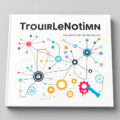In recent years, the concept of decentralized networks has gained significant traction, offering alternative solutions to the centralized architectures that have dominated for decades. As technology continues to evolve, understanding decentralized networks becomes essential for grasping the future of connectivity, security, and digital interaction.

What is a Decentralized Network?
A decentralized network distributes its processing and control across multiple nodes instead of relying on a single central authority. This structural shift not only enhances security and performance but also minimizes the risks associated with centralized points of failure. For instance, if one node goes down or is compromised, the others can continue to function independently, ensuring resilience and reliability.
Key Characteristics of Decentralized Networks
-
Distributed Control: Unlike centralized systems, where a single entity has dominion, decentralized networks spread control among all participants. This reduces the chances of censorship and manipulation.
-
Enhanced Security: By not having a central authority, decentralized networks are less vulnerable to attacks. Hackers typically target central servers, so distributing data across various nodes increases difficulty in compromising the network.
-
Increased Transparency: Many decentralized systems employ blockchain technology, which offers a transparent ledger of interactions. Participants can verify transactions independently, fostering trust among users.
The Role of Blockchain Technology
Blockchain stands out as a significant driving force behind the rise of decentralized networks. Initially introduced as the underlying technology for cryptocurrencies like Bitcoin and Ethereum, blockchain has proven its utility beyond financial transactions. It enables smart contracts, decentralized finance (DeFi), and even decentralized applications (dApps), all functioning without centralized oversight.
Examples of Blockchain Applications
-
Cryptocurrencies: Digital currencies that operate on decentralized networks, allowing peer-to-peer transactions without intermediaries.
-
Smart Contracts: Self-executing contracts with the terms written into code, automatically enforcing and executing agreements based on predefined conditions.
-
Decentralized Organizations: Organizations that operate via blockchain governance, allowing stakeholders to participate in decision-making without a central authority.
Advantages of Decentralized Networks
Decentralized networks bring multiple benefits, particularly in enhancing user experience and operational efficiency. These advantages include:
-
Increased Privacy: Users control their own data, deciding what to share and with whom. This contrasts with traditional models where centralized entities collect and exploit user information.
-
Reduced Costs: By eliminating middlemen in transactions and processes, decentralized networks can lower costs, making services more accessible.
-
Innovation and Accessibility: Open-source principles inherent in many decentralized projects foster innovation. Developers worldwide can contribute to improving systems, leading to more robust and versatile applications.
Challenges of Decentralized Networks
Despite their potential, decentralized networks face several challenges. Key obstacles include:
-
Scalability: As these networks grow, effectively managing increased data and user interactions can be complex. Robust solutions are necessary to ensure that performance remains optimal.
-
User Experience: While decentralized applications can offer better privacy and security, the initial user experience often lags behind centralized counterparts, making onboarding more challenging.
-
Regulatory Considerations: Governments are still figuring out how to regulate decentralized systems effectively, which can create uncertainty and hinder wider adoption.
The Future of Connectivity
As we advance into a more connected world, the principles of decentralization are likely to play a pivotal role in shaping internet infrastructure and digital economy landscapes. With increased interest from businesses, governments, and consumers, decentralized networks could drive a shift towards more open, secure, and user-centric digital ecosystems.
In conclusion, decentralized networks represent not merely a technological trend but a fundamental shift in how we approach connectivity and data. Their ability to enhance security, promote transparency, and empower users aligns with a growing demand for systems that prioritize user autonomy, suggesting a promising and transformative future for global connectivity.



